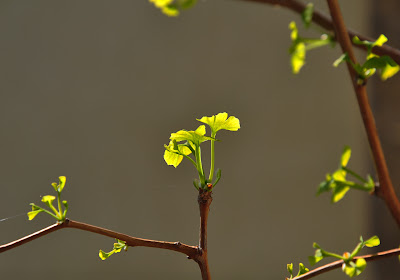I keep a few mature Trichocereus plants that are moved out on the balcony come spring. While the Trichocereus peruvianus (Peruvian Torch cactus) and Trichocereus bridgesii plants usually take the transition to being exposed to the elements in stride, I always have to look out for my Trichocereus pachanoi (San Pedro cactus) not to get sunburned. Like in humans sunburn in cacti is the result of an inflammation/damage of the epidermis caused by excessive exposure to ultraviolet (UV) radiation from sunlight; typically most severe in new growth.

San Pedro cactus developing a sunburn
Consequently I aim to introduce the tender Trichocereus pachanoi gradually to full sun. This spring I made sure to place the San Pedro in an area that lies in shade most of the day. I even heeded the weather reports and moved the plants indoors on sunny days. Still the San Pedro is developing a sunburn in the new growth area facing the sun - interestingly it doesn't seem to get sunburned at the growing point at the tip but always a bit down the side from it, probably because of the steeper angle of incidence of the sun rays and UV radiation.

Undamaged, bright green new San Pedro growth
More severe burns turn into unbecoming, hard tan scars as illustrated by the below picture of last years burn (where I thoughtlessly moved the plants out and placed them in a sunny spot without observing them for a couple of days).

Trichocereus pachanoi with sunburn from last year
A light sunburn can be outgrown but the hard scars are permanent.
I'll end this post on a more positive note with the image below of a Ginkgo biloba happily setting new leaves :-) The Ginkgo biloba grows on the balcony year-round.

Ginkgo biloba ushering in spring
Malpighia 1927 v.30 (added: 11/24/2025)
-
*By:*
Borzi, Antonino,1852-1921.
Penzig, O.1856-1929.
Pirotta, Romualdo,1853-1936.
*Publication Info:*
Messina : g. Capra & co., 1887-89 ; Genova : Tip. di A...
5 weeks ago


















